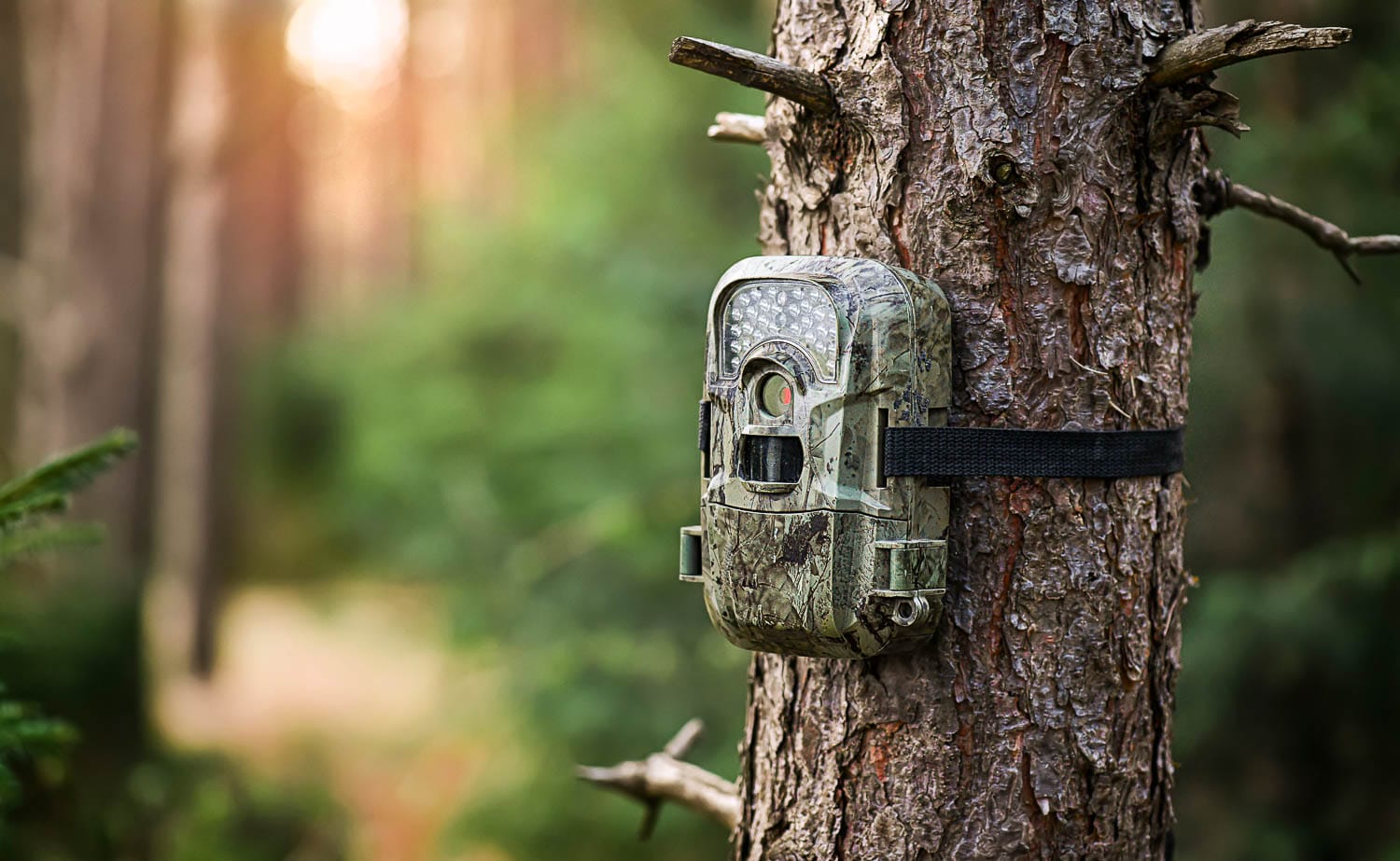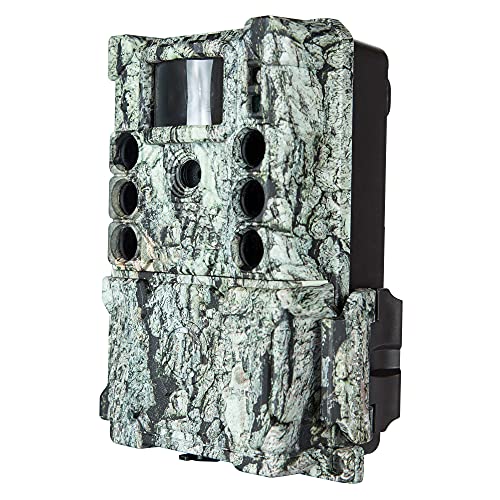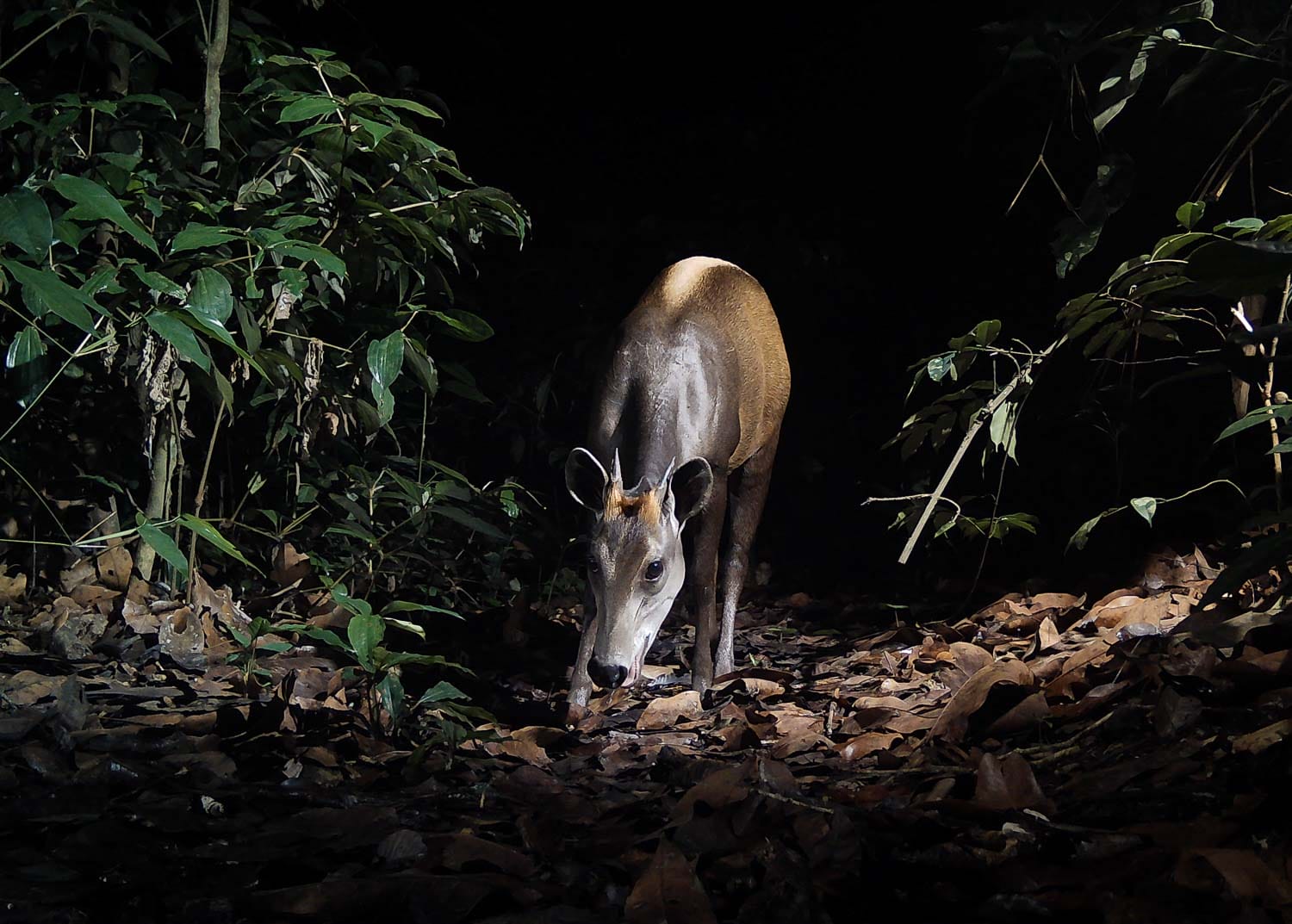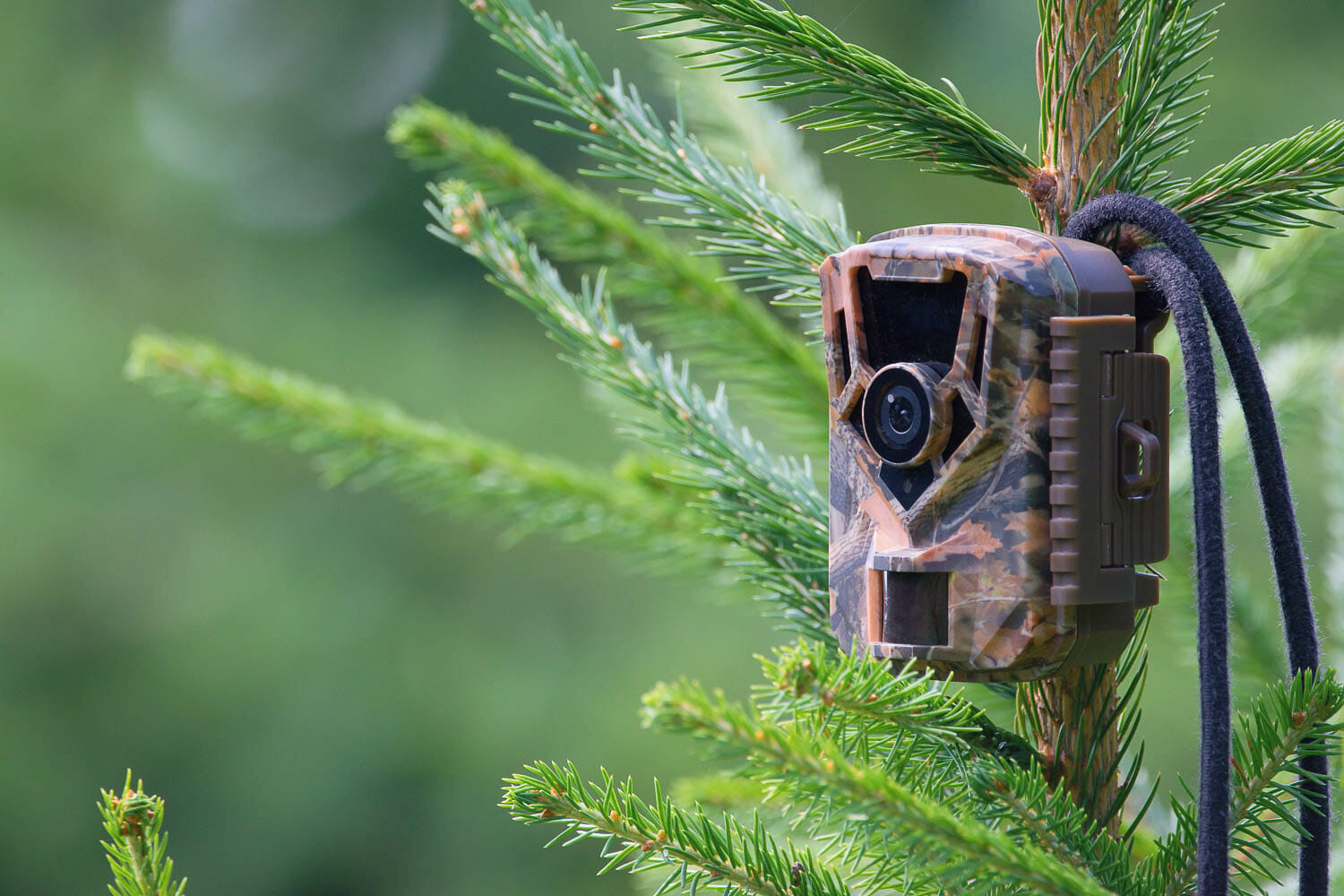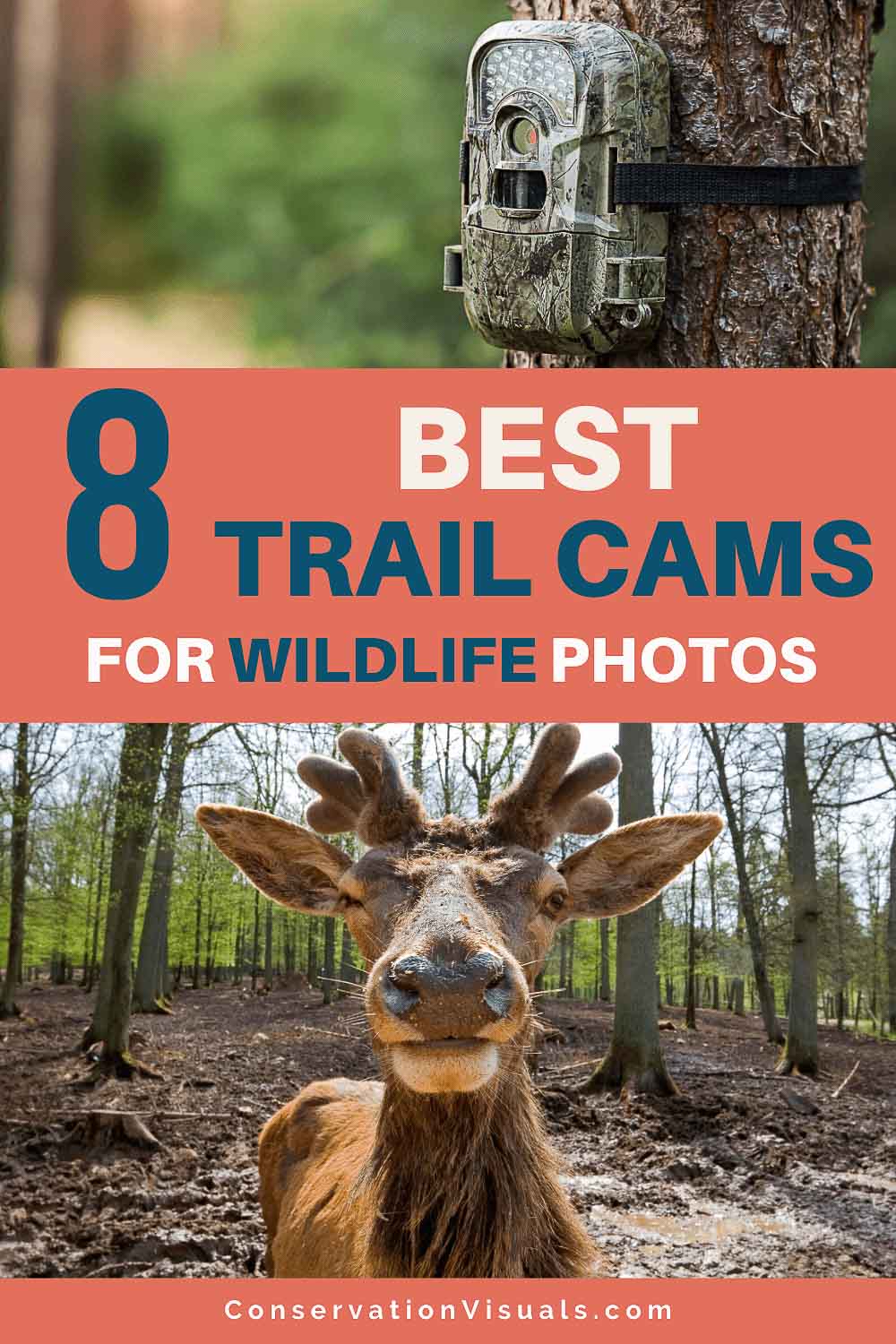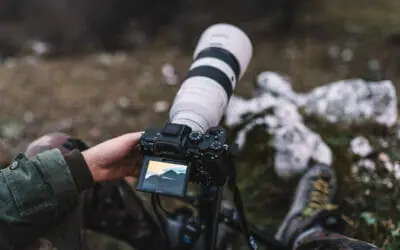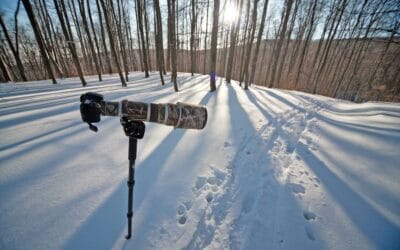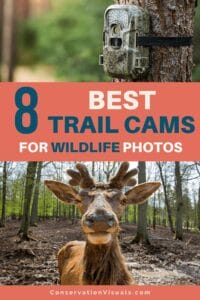Whether you're a seasoned wildlife photographer or a beginner looking to dip your toes into the thrilling undercover world of trail photography, this guide has got you covered in finding the best trail camera for you.
Trail cameras, also known as a game camera or camera trap, are remote cameras designed to shoot covert photos of wildlife.
Trail cams are equipped with motion sensors and high-resolution lenses, allowing you to capture stunning moments with precision and clarity while not disturbing wildlife in their natural environment.
With a wide variety of options available, it's important to understand that trail cameras can differ in features such as image quality, video recording capabilities, trigger speed, battery life, and storage capacity.
This review delves into these details, helping you decide which wildlife camera is right for you when compared to other cameras.
Contents
- What to look for when shopping for the best trail camera
- What's the difference between a Wi-Fi trail camera and a cellular trail camera?
- How we picked the best trail cameras for wildlife photographers
- Reviews
- How are trail cameras used by wildlife photographers? By conservation photographers?
- How to choose the best trail camera for YOU
- Tips for setting up your trail camera
Our picks at a glance
- Best overall: SpyPoint Flex G-36 Cellular Trail Camera
- Best build: Reconyx HyperFire 2 Covert IR Trail Camera
- Best detection range: Bushnell Core DS-4K No Glow Trail Camera
- Best video: Stealth Cam DS4K Ultimate Trail Camera
- Best unlimited storage: Moultrie Mobile Edge Cellular Trail Camera
- Best cellular: Tactacam Reveal X Pro Cellular Trail Camera
- Best images: GardePro A3S Trail Camera
- Best budget: Vikeri 4K 32MP Trail Camera
- Best lighting: Camtraptions Trail Camera
What to look for when shopping for the best trail camera
When you're on the hunt for the best trail camera, there are several key features to consider. Here's what to look for:
❂ Resolution
Higher resolution typically translates to more detailed and clearer shots. For instance, a camera with a still resolution of 30MP should deliver sharper and more detailed pictures than a camera with a 10MP resolution.
Similarly, a 4K video resolution will offer a more details compared to a camera that records in, say, 1080p.
The importance of resolution depends on the intended use of the trail camera though.
If you're studying wildlife behavior, a high-resolution camera will capture detailed images that can help in identifying specific animals or observing their patterns in granular detail.
On the other hand, if you're using the camera for general surveillance, a camera with average resolution may suffice.
❂ Trigger speed
Trigger speed is the time it takes for a trail camera to detect motion and capture a photo or video.
This feature determines the camera's ability to capture quick, fleeting moments in the wild.
If it's a slowpoke, you might end up with a photo of a deer's tail end as it saunters out of frame.
On the other hand, a quick-draw McGraw of a camera will snap the image just like that (imagine a finger snap), leaving you with a full view of your wildlife visitor.
For folks studying fast-moving animals, a trail camera with a faster trigger speed is invaluable. It ensures that rapid events or movements aren't missed.
On the other hand, for individuals using trail cameras for broader surveillance purposes, such as monitoring a food plot or a large, open area, a slower trigger speed may be sufficient.
❂ Detection range
Detection range is the distance at which a trail camera can detect movement and trigger image capture.
The larger the detection range, the greater the area the camera can cover.
For those intending to monitor a large area, a camera with a wide detection range can capture more activity.
Conversely, if you're monitoring a small area or a specific spot such as a nest or feeding spot, a camera with a smaller detection range should do the trick.
❂ Night vision
Night vision is crucial as SO MUCH wildlife activity tends to occur overnight.
Night vision in trail cameras is typically achieved through infrared (IR) technology. When the camera sensor detects a movement, IR LEDs emit a flash that illuminates the scene, allowing the camera to capture images or videos even in complete darkness.
There are several variants of IR flash: no-glow, low-glow, and white flash.
No-glow cameras use LEDs that emit light at a wavelength that's invisible to the naked eye.
Low-glow cameras emit a faint red glow when taking a picture, which may be seen by humans or wildlife if they look directly at it.
White flash trail cameras use visible light to capture color images or videos day and night. This results in brightly illuminated, color images at night, unlike the black and white imagery from other types of IR flashes. This visible flash could scare off wildlife or alert people to the camera's presence.
❂ Audio
Sound recording in trail cameras can add an extra dimension to wildlife monitoring, providing insights into animal communication, mating calls, and alert signals and offering a deeper understanding of wildlife behavior.
Not all uses of a trail camera necessitate the need for audio recording though. If you're using the camera for general surveillance or simply to see which animals are visiting, a camera with just video and still image capabilities may be perfectly adequate.
❂ Storage
Trail cameras typically store files on an SD card, but some also have built-in internal memory, use cloud storage, or transfer files via a cellular network.
Choosing the trail camera with right storage option for you, whether on an SD card, internal storage, cloud, or all(!), depends on your needs and the frequency you're able to check the camera.
❂ Power
Most trail cameras are battery-powered. The advantage of battery-powered trail cameras is their portability and convenience, as they can be placed anywhere without the need for an external power source.
Some trail cameras are equipped with an integrated solar panel that can charge a built-in rechargeable battery.
These solar-powered cameras can reduce the hassle of changing batteries and can provide continuous power for an extended period.
❂ Other considerations
If you're having trouble deciding between multiple cameras, look at your options to see if there's a notable difference in the LCD screen or in its ability to shoot video or in any other criteria that will make a difference to you.
Also consider whether cellular cameras, WiFi cameras, or neither appeal most to you, and the camera's durability (being outside and on its own, it'll need to fend for itself out there!)
And, remember, the “best” trail cameras aren't necessarily the ones with the longest list of features or highest price tag. It's the one that best fits your specific needs, budget, and is best at snagging shots of the sort of wildlife you are hoping to capture.
NOTE: Regardless of which trail camera you use, always check the area's laws and regulations around using trail cameras. Some states restrict their use, or restrict certain types of trail cameras. Be sure you're following the rules so your wildlife photography fun isn't spoiled by a legal oopsie.
What's the difference between a Wi-Fi trail camera and a cellular trail camera?
Cellular cameras and Wi-Fi cameras sound synonymous, but they're actually not. Let's break it down.
A WiFi trail camera, like the name suggests, uses your local WiFi network to send images directly to your smartphone or computer. A Wifi trail camera is a great choice if your camera is stationed within your WiFi range, say, monitoring wildlife in your backyard.
Cellular trail cameras, on the other hand, use cellular networks to send images. All you need is a cellular signal at the camera site, and voila! – you're connected. While these cameras often require a monthly data plan, the ability to “teleport” to your trail camera location from anywhere is pretty rad.
So, the bottom line is – choose a Wifi trail camera if your camera is within your WiFi network range. Otherwise, a cellular trail cam – as long as the site has cell service – allows you to check in no matter how far away you are.
How we picked the best trail cameras for wildlife photographers
We at Conservation Visual Storytellers Academy have extensive experience in nature and landscape photography. Our writers and editors use the major camera systems available and have decades of experience in the field.
To choose the best recommendations for you, we combine personal experience, insights from fellow pros and industry experts, editorial and user reviews, and details from manufacturers. We carefully weigh the pros and cons of each item and put only what we feel is the best selection available into our recommendation guides.
We've curated a selection of trail cameras meant to meet the needs of different goals and budgets. Factors we take into consideration include stills and video resolution, detection range, battery life, and more features that allow you to have the best trail cam experience.
For advice on what to consider in a trail camera and how to choose the right camera for you, use the table of contents to jump to those sections.
Best Trail Cameras: Our Reviews & Recommendations
1. SpyPoint Flex G-36 Cellular Trail Camera
Easily considered one of the best, this cell cam produces quality photos at a reasonable price point.
- Enhanced cellular connectivity
- Clear and detailed images
- Excels at night photography
- Complex setup process for beginners
SPECIFICATIONS
- Stills Resolution: 36MP
- Video Resolution: 1080P
- Trigger Speed: 0.3 seconds
- Detection Range: 100 feet
- Video Length: 15 seconds
- Night Vision: Yes
- Audio Recording: Yes
- Power: LIT-22 battery pack or 8 AA batteries; DC 12V
WHAT WE THINK
The SpyPoint Flex G-36 is considered by many wildlife photographers to be one of the best cellular trail cameras.
With a stellar 36MP stills resolution and 1080P video resolution, it ensures crystal clear shots of those unpredictable, transcendent moments in nature.
The camera boasts an impressive trigger speed of 0.3 seconds and a generous 100′ motion detection and flash range.
Plus, the inclusion of audio recording and night vision capabilities amplifies its versatility.
Overall, for wildlife photographers seeking quality and performance, the SpyPoint Flex G-36 is a top choice in trail cams.
BEST PRICES
2. Reconyx HyperFire 2 Covert IR Trail Camera
Stands out with its impressive motion sensing technology and high-quality night vision, making it a top choice despite its higher price range.
- Sturdy build with five year warranty
- Clear and crisp night photos
- Made in the USA
- Impressive battery life
- Not cheap
SPECIFICATIONS
- Stills Resolution: 1080P Wide Screen or 3MP
- Video Resolution: 720p
- Trigger Speed: 0.25 seconds
- Detection Range: 100 feet
- Video Length: Up to 10 Seconds
- Night Vision: Yes
- Audio Recording: Yes
- Power: 12 AA batteries
WHAT WE THINK
The Reconyx HyperFire 2 Covert IR Camera with its impressive motion sensing technology, PIR detection range of 100 feet, and 0.2 second trigger speed you can be assured that not a single wild moment is missed – even at night thanks to its NoGlow™ GEN3 High Output Infrared night vision that reaches an impressive 150 feet.
The image sensor supports crisp and clear night time shots that display no graininess or blurring, and vibrant daytime images rich in color and clarity.
Video-wise, it can record 720p HD videos with audio up to 10 seconds long and offers customizable shot sequences and time-lapse surveillance intervals.
Its sturdy, weatherproof housing a-OK in even inclement weather, plus its being made in the USA, instills confidence in its reliability.
It's great for wildlife photographers focused on capturing the presence of wildlife species, especially for scouting for great DSLR camera trap locations.
BEST PRICES
3. Bushnell Core DS-4K No Glow Trail Camera
Exceptional image clarity, rapid trigger speed, and a stealthy no-glow infrared flash.
- No glow flash
- Simultaneous picture and video capture
- Dual image sensor
- Optimized battery life with solar panel option
- No wireless connectivity
SPECIFICATIONS
- Stills Resolution: 32MP
- Video Resolution:4k
- Trigger Speed: 0.15 seconds
- Detection Range: 120 feet
- Video Length: 60 seconds
- Night Vision: Yes
- Audio Recording: Yes
- Power: 6 AA batteries; solar panel option
WHAT WE THINK
The Bushnell Core DS-4K No Glow Trail Camera is a standout among trail cameras for wildlife photographers.
With its impressive features and performance, it delivers exceptional video and picture quality, plus offers user-friendly features like Pro Image Tuning for adjusting camera settings, a No-Glow LED with a 120′ night range, and a remarkable trigger speed of just 0.15 seconds with a 1-second recovery rate.
It also has GPS Geotag capabilities and a 1.5″ color viewing screen for convenient on-the-spot review.
With excellent photo quality, fast trigger speed, and user-friendly features, the Bushnell Core DS-4K No Glow Trail Camera is undeniably one of the best trail cameras on the market.
BEST PRICES
4. Stealth Cam DS4K Ultimate Trail Camera
The Stealth Cam DS4K provides durability in trail cameras without sacrificing picture quality.
- High-resolution images
- 4K video mode
- Easy setup
- High capture rate
- Max capacity SD card is only 128 GB
SPECIFICATIONS
- Stills Resolution: 32MP
- Video Resolution: 4K
- Trigger Speed: 0.2 seconds
- Detection Range: 100 feet
- Video Length: 10-180 seconds
- Night Vision: Yes
- Audio Recording: Yes
- Power: 12 AA batteries; 12V DC Jack
WHAT WE THINK
The Stealth Cam DS4K Ultimate Trail Camera is the perfect companion for wildlife photographers. Thanks in large part to its 32MP sensor and 100′ Low Glow infrared flash range, this camera captures images with detail and clarity day and night.
Plus, with a trigger speed of just 0.2 seconds, even the fastest-moving wildlife won't escape your lens!
Whether you're a seasoned wildlife photographer or a casual nature enthusiast, you'll appreciate exceptional image quality and a range of useful features from this Stealth Cam.
BEST PRICES
5. Moultrie Mobile Edge Cellular Trail Camera
While other trail cameras have limited storage options, the Moultrie Mobile Edge allows users to capture subjects and record video without boundaries.
- Affordable
- Unlimited cloud storage
- Reliable cellular connectivity
- Impressive resolution
- Requires data subscription for cellular functionality
SPECIFICATIONS
- Stills Resolution: 33MP
- Video Resolution: HD 720p
- Trigger Speed: 0.85 seconds
- Detection Range: 80 feet
- Video Length: U/A
- Night Vision: Yes
- Audio Recording: Yes
- Power: 8 or 16 AA batteries; compatible with solar power accessories
WHAT WE THINK
While most trail cameras rely on SD cards, this has unlimited cloud storage. Not to be too over the top about it, but this really feels like sort of a trail cam game-changer.
Plus, at a lower price point with innovative features like that and impressive battery life and a solar option, we're pretty pleased.
Plus, the image quality is solid, both during the day and at night with its improved IR LED arrangement that reaches up to 80′.
While the trigger speed isn't as fast as the other trail cameras on our list, overall, the Edge is an easy-to-use and feature-packed cellular trail camera that delivers exceptional image quality, reliable connectivity, and extended battery life.
BEST PRICES
6. Tactacam Reveal X Pro Cellular Trail Camera
Widely regarded as the best cellular trail camera by wildlife enthusiasts and professional photographers alike.
- Essentially no visible flash
- Impressive sensor range
- Adjustable night illumination
- Built-in LCD viewing screen
- Requires subscription for cellular capabilities
SPECIFICATIONS
- Stills Resolution: 16MP
- Video Resolution: Request HD videos from app
- Trigger Speed: 0.42 seconds
- Detection Range: 96 feet
- Video Length: U/A
- Night Vision: Yes
- Audio Recording: Yes
- Power: 12 AA batteries
WHAT WE THINK
The Tactacam Reveal X Pro Cellular Trail Camera is highly regarded by both wildlife photographers and researchers. Its 16MP still resolution and HD video capability ensure crisp, clear images and videos, while its impressive range and adjustable night illumination augment the quality of the images captured, even in low-light conditions.
And while set-up process that might be arduous for beginners, the built-in LCD viewing screen allows users to review photos on-the-spot or transmit photos from remote locations.
The Tactacam Reveal X Pro Trail Camera is a reliable cellular camera tough enough to handle itself during inclement weather all while capturing high-quality images in the wilderness.
BEST PRICES
7. GardePro A3S Trail Camera
Highly recommended investment for both professional and amateur wildlife photographers.
- High still resolution of 48MP
- H.264 MP4 compression format
- Super fast trigger speed
- Impressive night vision
- Depending on settings, it can be a mixed bag on battery life
SPECIFICATIONS
- Stills Resolution: 48MP
- Video Resolution: 1296p
- Trigger Speed: 0.1 seconds
- Detection Range: 85 feet
- Night Vision: Yes
- Audio Recording: Yes
- Power: 8 AA batteries
WHAT WE THINK
The GardePro A3S Trail Camera stands out with its high-resolution images and impressive night-time performance, thanks to its Sony Starvis image sensor and new-generation no-glow infrared LEDs.
Whether shooting in the darkest of nights or at the break of dawn, this camera delivers crisp, clear images up to 100 feet.
Its super fast 0.1 second trigger speed and 0.5 second recovery time, along with a wide 120° detection angle, ensure no wild wanderer is missed. Plus, an easy-to-use 2.4″ color screen with playback, time stamp, and programmable operation hours makes it user-friendly no matter your goals.
One of the best on our list and definitely a worthwhile investment for pros and enthusiasts alike.
BEST PRICES
8. Vikeri 4K 32MP Trail Camera
Excellent budget-friendly choice for wildlife photography and surveillance.
- Impressive features at a reasonable price point
- Fast trigger speed
- IP66 waterproof and dustproof
- Easy setup and use
- Can be a bit glitchy, but for the price...
SPECIFICATIONS
- Stills Resolution: 32MP
- Video Resolution: 4K
- Trigger Speed: 0.1 seconds
- Detection Range: 80 feet
- Night Vision: Yes
- Audio Recording: Yes
- Power: 4 AA batteries
WHAT WE THINK
The Vikeri 4K 32MP Trail Camera is the perfect budget-friendly option for those seeking high-end performance without breaking the bank.
Its ability to support up to 4K video and 32MP pictures, alongside its 40 no glow LEDs, essentially eliminates the chance of blurry images day and night.
The camera's incredibly fast 0.1 second trigger time and customizable shooting sequences guarantee capturing images even of the most fleeting wildlife moments.
Its robust IP66 waterproof rating, along with a wide operating temperature range, allows for durability in diverse environments.
Plus, a wide detection range of 120° and 80 feet motion detection ensures comprehensive monitoring, making it a versatile staple in any photography or surveillance toolkit.
BEST PRICES
9. Camtraptions Trail Camera
High-performing, reliable option for wildlife photography pros and dedicated enthusiasts
- Sony CMOS image sensor
- Off-camera flash options
- Inbuilt microphone, speaker, and temperature sensors
- Among the pricier options
SPECIFICATIONS
- Stills Resolution: 5MP
- Video Resolution: 4K, 1080p
- Trigger Speed: 0.2 seconds
- Detection Range: 65 feet
- Video Length: U/A
- Night Vision: Yes
- Audio Recording: Yes
- Power: 8 AA batteries, or external 12 VDC source
WHAT WE THINK
The Camtraptions Trail Camera is a versatile tool designed for wildlife research, conservation, and photography.
With its 5MP Sony CMOS image sensor, it captures crisp still images and records 4K videos at up to 30 FPS. The camera's PIR motion sensor detects animal movement with a quick trigger response time of 0.2 seconds.
With a battery life of up to 12 months and the option to extend standby time with an external battery, this camera is convenient to use and forget about, all while collecting well-lit, high-quality images like this:
Photo: Will Burrard-Lucas/Camtraptions
BEST PRICES
Photo: Tunatura/Shutterstock
How are trail cameras used by wildlife photographers? By conservation photographers?
Wildlife and conservation photographers utilize trail cameras extensively in their work, and for good reason.
These cameras play a pivotal role in capturing the raw, undisturbed behavior of wildlife, often resulting in stunning, natural shots that would otherwise be nearly impossible to achieve.
Apart from the aesthetic appeal, trail cameras offer the advantage of minimal disturbance to wildlife.
For conservation photographers in particular, trail cameras have become indispensable tools.
The ability to monitor wildlife populations over extended periods provides invaluable data about animal behavior, migration patterns, and population dynamics, contributing significantly to conservation efforts.
The time-lapse and motion detection features of trail cameras allow these photographers to document rare species and behaviors, creating powerful visual narratives that can drive conservation awareness and action.
Recommended: Check out our article Camera Trap Photography: Your Ultimate Getting-Started Guide for expert guidance on how to set up a DSLR camera trap kit.
How to choose the best trail camera for YOU
Tips for setting up your trail camera
Start by identifying your primary purpose for the camera. Are you a wildlife enthusiast wanting to capture the magic of nature in your backyard or a professional photographer putting together a photo story for publishing? Identifying your purpose will help narrow down your options.
Take into account the area where you'll be deploying the camera.
For instance, if your camera will be stationed in a location with harsh weather conditions, prioritize durability and weatherproofing.
The location will also help you determine is a WiFi or cellular camera is the best fit.
If you're setting the camera up within range of your WiFi network, a WiFi trail camera will do the trick, but if you plan to install it out of range, while still covered by a cellular network, it's probably better to check out cellular trail cams.
Consider also the camera's range and detection capabilities.
Will you be scanning a small garden patch, or an expansive stretch of wilderness? The answer could guide you towards a camera with a longer detection range or wider field of view.
And, of course, evaluate your budget.
Often, more expensive trail cameras often offer better features and durability, but that's not necessarily the case and it also doesn't mean you can't find a budget-friendly option that suits your needs.
The best trail camera for you is the one that fits your unique requirements, preferences, and budget.
When setting up your trail camera for the first time, there are several key points to bear in mind.
1. Choose the Right Spot
Placement is absolutely critical. Identify a location that sees frequent wildlife activity. This might be near a watering hole, food source, or a frequently used trail.
2. Get the Height Right
Ideally, the camera should be placed at about the same height as the objects you intend to capture. For most wildlife, this will be approximately 3 feet off the ground. However, consider your target species and try to place the camera at roughly eye level.
3. Point in the Right Direction
Avoid pointing your camera directly towards the sun, which can cause overexposed images. North or south-facing directions often work best. If you're placing the camera along a trail, consider if you'd like to get images or video of the animal head-on, or from the side. Then, angle the camera based on your preference.
4. Check for Obstructions
Ensure there are no branches or other obstructions in front of the camera that might trigger false positives. Also consider grasses that may blow in the wind, or shadows (like dappled sunlight in a forest) that could quickly shift and set off the camera.
5. Test Your Setup
After installing, walk in front of the camera to test the detection zone and adjust angles if needed. Make sure the camera is functioning correctly before leaving it alone.
6. Check your battery levels
Be sure you're using fully charged batteries. Double-check that the camera shows a full charge before heading out.
7. Regular Maintenance
Check your camera regularly to replace batteries and SD cards, and to ensure it hasn't been knocked out of position.
8. And a final tip: always check if you're allowed to set up your trail camera in your desired location
Prior to setting up your trail camera, always ensure that you are well-versed with the local laws and regulations concerning trail camera placement. This includes laws related to trespassing, surveillance, and wildlife protection.
If you're placing your camera on public land, make sure to obtain any necessary permits or permissions.
Similarly, if you're setting up on private land, always get the landowner's explicit permission.
Furthermore, consider the timing of your activities. During certain seasons, such as nesting or breeding seasons, it might be illegal or unethical to disturb wildlife.
Researching and abiding by these rules not only safeguards our cherished wildlife but also helps to maintain the integrity of our hobby.

